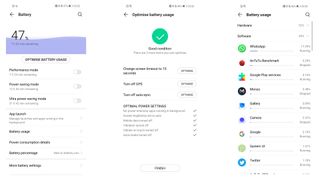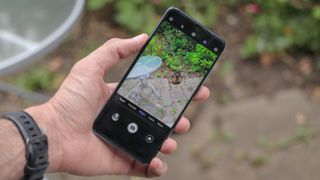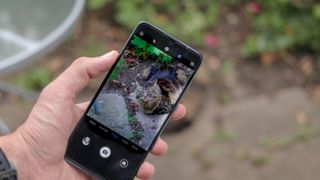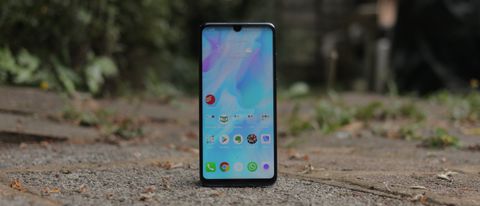Why you can trust TechRadar
Battery life
- 3,340mAh battery
- 18W fast charging
- No wireless charging
The Huawei P30 Lite’s battery is definitely adequate, but it isn’t exceptional.
At 3,340mAh, its capacity is around what we’d expect from a phone with a medium sized screen and mid-range power demands.
Huawei also offers a lot of optimization tools buried in the settings that limit background processes, turn off unused connectivity features, and alert you as to which apps are going rogue and eating into your battery.
The phone easily made it through a workday with moderate use, occasional picture taking, hot-spotting and streaming video. Meanwhile, 90 minutes of full-brightness Full HD video playback drained it by 18%. That’s fair, and pretty representative of most smartphones with good, but not great battery life.

Huawei’s Quick Charge tech is made possible using an 18W charger that ships with the phone. We were able to charge up the phone from flat in just over an hour and fifteen minutes, which isn’t too bad going.
By comparison, the pricier Huawei P30 supports 22.5W, while the cheaper Huawei P Smart (2019) doesn’t support fast charging, with speeds clocking in at 10W.
Camera
- Triple camera setup
- Wide, ultra-wide and depth sensor
- Primary 48MP camera
Huawei’s P30 Lite packs plenty of cameras and pixels. Its triple camera rear setup includes one wide 48MP (f/1.8) camera, one ultra-wide 8MP (f/2.4) camera and one 2MP (f/2.4) depth sensing camera.
That means that the P30 Lite’s primary snapper is higher resolution than that of the Huawei P30. What it lacks however is optical image stabilization of any kind, and there’s also no 4K video support.
Image quality from the main camera is impressive. Pictures shoot at 12MP, rather than the full 48MP resolution. This is because the P30 uses a technique called pixel binning, which combines multiple pixels to pull out a lower resolution image with better tonal accuracy and noise handling.

Shots are taken nice and quickly too, despite all the pixels that need to be processed. The interface is also extremely comprehensive, with everything from a night mode that keeps the shutter open a little longer, through to a portrait mode for a healthy dose of background blur.
Shots captured in good light pack a fair amount of contrast, which can be a good thing if impact is what you’re after - this is especially true if AI scene recognition is switched on.
The downside of punchy, contrasted shots however can often be a lack of nuance in darks and lights. Dynamic range is impressive when snapping in the dedicated HDR mode, but we wish the phone had an auto-HDR feature for automatic mode.

As for low light shooting, we found the P30 Lite held on to a bit more noise than the P30 and even the cheaper Redmi Note 7, but still performed respectably for the price. This noise could come down to a touch of over sharpening, but when the lights drop, both the night mode and manual mode brighten things up, as too does the rear flash.
It’s a similar story when it comes to the selfie camera, with images looking high in contrast, occasionally at the expense of detail. Beauty modes offer plenty of customization options, and this means you should be able to find the right kind of flattering effects for your selfies.
The ultra-wide camera also performed impressively for the most part, though it does sport a more pronounced fisheye effect than that of the P30 or Huawei P30 Pro.
As for video, it’s a shame the P30 Lite doesn’t offer 4K recording, given the fact it costs over double other phones that do, like the Moto G7 Play. Despite this, Full HD footage looks punchy and packs a healthy amount of detail, and the electronic image stabilization does a fair job of compensating for hand shake.
Camera samples







Current page: Battery life and camera
Prev Page Introduction, key features and design Next Page Anything else I should know?Basil Kronfli is the Head of content at Make Honey and freelance technology journalist. He is an experienced writer and producer and is skilled in video production, and runs the technology YouTube channel TechEdit.

